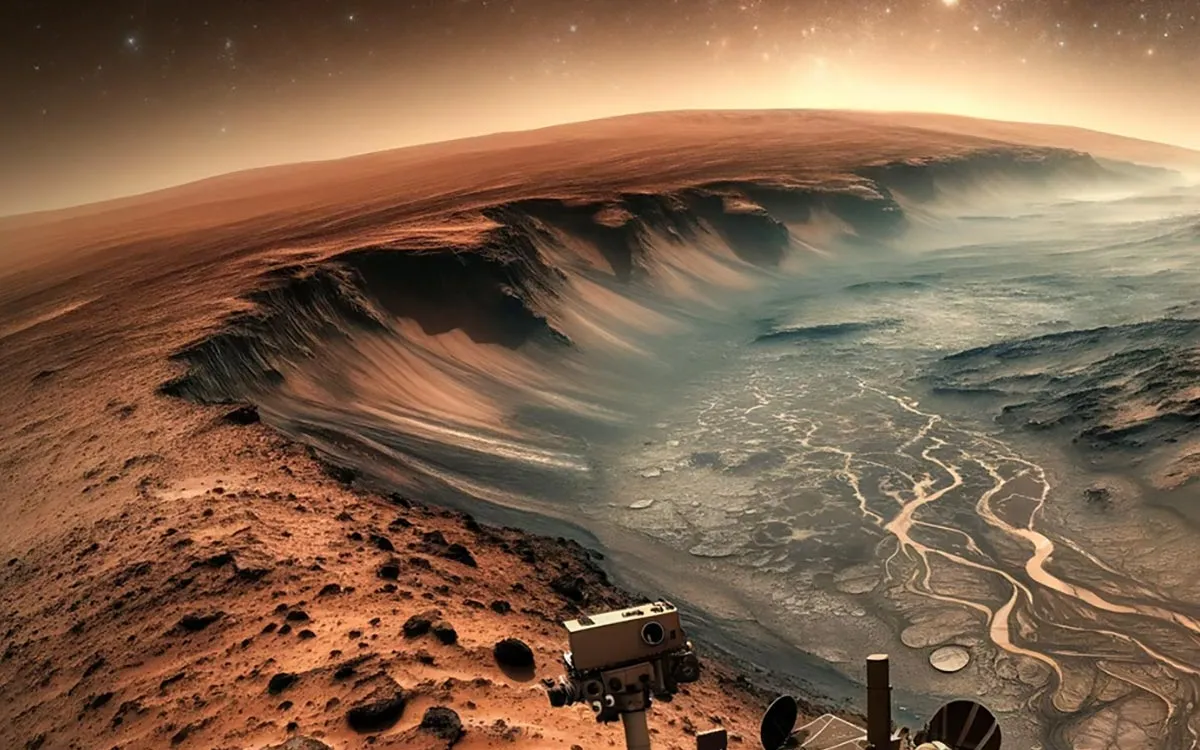
The recent discovery of pale rocks on the Martian surface has significantly enhanced our understanding of the planet's ancient environment. This finding, made by Mars exploration expert Roger Wiens, a professor in the College of Science at Purdue University, indicates that Mars may have once been warmer and wetter than previously imagined. Using NASA's Perseverance rover, Wiens and his team fired a laser at these unusual rocks, revealing their composition to include high levels of aluminum associated with the mineral kaolinite.
The presence of kaolinite is particularly intriguing because this mineral typically forms in environments characterized by warmth and moisture. Wiens indicated, "On Earth, these minerals form where there is intense rainfall and a warm climate or in hydrothermal systems such as hot springs. Both environments are ideal conditions for life as we know it." The discovery suggests that the Martian environment may have been conducive to life in its distant past, as kaolinite is often left behind when rocks are subjected to flowing water over extended periods.
Wiens has a long history of working with Mars rovers and played a pivotal role in the development of the SuperCam instrument, which is mounted on Perseverance. This innovative technology allows scientists to analyze the Martian surface using a variety of techniques. SuperCam was developed through a collaboration with Los Alamos National Laboratory and the French Institut de Recherche en Astrophysique et Planétologie. Now, Wiens leads a research team that utilizes SuperCam's capabilities to uncover new insights about Mars.
The unusual pale rocks, first observed by the rover shortly after its landing, intrigued the research team. However, it wasn't until later that they recognized the significance of these rocks, now labeled as "float rocks" because they are not part of the underlying bedrock. After SuperCam’s laser analysis, Wiens stated, "These rocks are very different from anything we’ve seen on Mars before. They’re enigmas." The team, including researchers Candice Bedford and Clement Royer, conducted an in-depth study of the rocks' composition and structure.
Wiens and his team identified over 4,000 of these pale rocks and pebbles scattered across the Martian surface. The presence of kaolinite is particularly exciting as it typically forms in warm, wet environments that could support microbial life. While on Earth, kaolinite is found in sedimentary deposits stemming from ancient soils and coastlines, the Martian rocks appear to be harder, potentially due to different geological processes. Additionally, the rocks were found to contain aluminum spinel, a mineral that can form in either igneous or metamorphic environments, adding further complexity to their origin.
One of the most pressing questions regarding Mars revolves around its history of water. Wiens emphasized, "The big questions about Mars are about water. How much water was there? How long was there water?" He noted that kaolinite contains significant amounts of water bound within its structure, suggesting that some of this water may still be present on Mars, locked within the minerals.
While the Perseverance rover has yet to find these rocks in their original geological context, researchers, including Bedford, are keen to investigate their source. "Investigating these rocks in place will help us test our hypotheses on how the rocks formed, how they relate to Mars’ ancient environment, and the habitability of the planet in the past," she explained. The ongoing exploration of the Jezero crater's rim may provide insights that could lead humanity closer to discovering ancient extraterrestrial life, as the existence of water is essential for life as we understand it.
By studying the current state of Mars, scientists are piecing together clues about both the planet's past and the future possibilities of life beyond Earth.